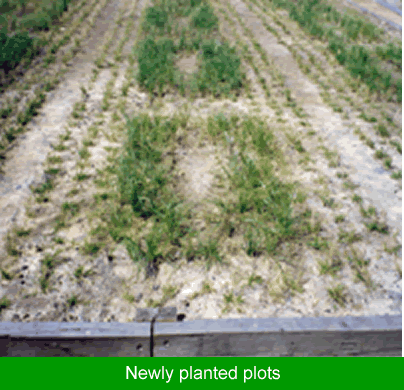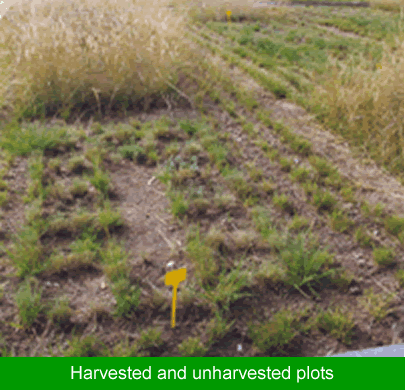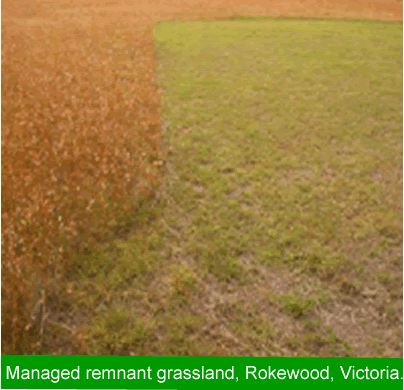


Summary of final report on the Australian Flora Foundation funded project:
John Delpratt, The University of Melbourne, Burnley Campus, Richmond, VIC 3121, Email: jdelprat@unimelb.edu.au;
Ian Shears, The Melbourne City Council, GPO Box 1603M, Melbourne, VIC 3001, Email: Ian.Shears@melbourne.vic.gov.au.
Date of report: December 2006.
Questions: What effect does the frequency of biomass removal have on the survival and productivity of a range of perennial native forbs? What effect does nitrogen availability have on the survival and productivity of a range of perennial native forbs? What effects do combinations of frequency of biomass removal and nitrogen availability have on the survival and productivity of a range of perennial native forbs?
Method: A native grassland community comprising Kangaroo Grass (Themeda triandra), Common Wallaby Grass (Austrodanthonia caespitosa) and twelve perennial forbs was planted in a pre-determined pattern into a constructed, weed free, low nutrient sub-soil plot. Two frequencies of biomass removal (annual; two-yearly) and two levels of nitrogen application (none; two-monthly applications of 10 g m-2 ammonium nitrate) were combined into four factorial treatments, maintained for four years. Biomass production of the component species and forb phenology and survival were recorded and analysed for the duration of the experiment.
Results: All species established well following a late autumn planting. Initially, the experimental plots were dominated by Wallaby Grass, to be replaced by Kangaroo Grass in the later years of the experiment. The survival and growth of the various forbs varied between species, depending on their life form and growth habit. Only one forb species, the geophytic Bulbine Lily (Bulbine bulbosa) survived in all treatments. Several forbs survived within one or more treatments, usually on annually harvested plots with no applied nitrogen. Two forbs, Bulbine Lily and Native Flax (Linum marginale) recruited heavily from seed during the course of the experiment.
Conclusions: Despite their on-going presence in many mown remnants, the reliable, long term persistence of colourful perennial native forbs in planted grassland communities remains problematic. Future research might focus on the density of planting, the frequency and timing of biomass removal and the species and population size of the planted forb components.
